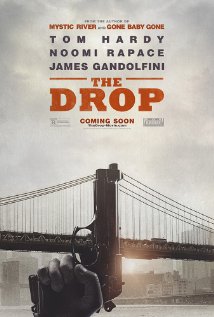The Girl Who Played with Fire (2010)


Content by Tony Macklin. Originally published on July 7, 2010 @ tonymacklin.net.
The Girl Who Played with Fire is the follow-up to the very popular The Girl with the Dragon Tattoo. It's the second film adaptation from the Millennium trilogy by the late Swedish author Stieg Larsson.
The Girl with the Dragon Tattoo -- both novel and film were international successes -- established a towering standard.
The novel The Girl Who Played with Fire emulated its stalwart precursor, but the movie is not the equal of its cinematic predecessor or its literary source.
The best aspect of the movie version of The Girl Who Played with Fire is that Noomi Rapace and Michael Nyqvist reprise their roles as cool and feisty Lisbeth Salander and dogged Mikael Blomkvist. They both still fit their roles ideally.
The Girl with the Dragon Tattoo was evocatively directed by Niels Arden Oplev, but he chose not to direct The Girl Who Played with Fire, because he didn't want to be in post production for Dragon Tattoo as he was doing Fire and the third film in the series, The Girl Who Kicked the Hornet's Nest.
Instead Daniel Alfredson directed the latter two, and screenwriter Jonas Frykberg replaced Dragon's more artful Rasmas Heisterberg and Nikolaj Arcel.
The Girl with the Dragon Tattoo is artistic, while The Girl Who Played with Fire is not. It's a fairly standard thriller.
The Girl Who Played with Fire is the story of Lisbeth and Mikael, who worked so well together in the past. Lisbeth has disappeared for more than a year, visiting other countries, resorts, and beaches on the money she pilfered in the past. For all that time she has not contacted anyone she knew. She has vanished.
Mikael is still writing for Millennium magazine, buoyed by the sudden success he had in the past. An investigative reporter (Hans-Christian Thulin) brings Millennium a project on sex trafficking that he is doing with his criminologist girl friend.
Millennium decides to back it, but it results in murders, and Lisbeth is the accused. Mikael seeks to prove her innocence while trying to bring the evil traffickers to justice.
Stieg Larsson is like Thomas Harris, the American writer who wrote four novels about Hannibal Lector. Both writers do a lot of research, and despite the abundance of details, their novels are tantalizing and intense. They take the thriller to new depths.
But both men lost their best director after his initial movie. Jonathan Demme directed The Silence of the Lambs (1988), which won Academy Awards for himself and the picture.
Alfredson is a Swedish Brett Ratner, the undistinguished American director of Harris's Red Dragon (2002).
Alfredson likes to keep his camera in motion -- often for little reason, and he is a fan of bright lighting. He uses some ill-chosen shots and at times awkward editing. Unlike Oplev who employed setting as a character -- frigid and bleak, Alfredson's setting is merely like picture postcards.
Alfredson lets suspense lag. Surprisingly Larsson's novel is more suspenseful than the movie. Some of this is the fault of screenwriter Jonas Frykberg; he is not the equal of the screenwriters of Dragon Tattoo.
Larsson's dialogue often explains and clarifies, but Frykber's bogs the movie down. He has a difficult job, but he misses opportunities, such as when Mikael in the book gives four reasons supporting Lisbeth to police officers Bulanski and Modig (she is a crucial character lessened in the movie).
Frykberg cuts scenes and characters, and he changes speakers arbitrarily and for no good reason, e.g., from Blomkvist to editor Erika Becker about Millennium's mission -- to stick their "neck out."
Frykberg keeps Lisbeth and Mikael separate much later than the book does.
Frykberg drops a tornado, a killing, a kidnap attempt, and he makes Lisbeth a lesbian, not the active bisexual she is in the book. He's as ignorant as the police. And in the novel Lisbeth is bitterly in love with Mikael. In the book it's much clearer why they broke up and why she is estranged.
The book is teeming with piquant details. Lisbeth reads Crime and Punishment and listens to David Bowie singing "Cat People" on the radio -- "putting out fire with gasoline." This may be contrived, but it is deft and appealing.
Besides Rapace and Nyqvist in the leads, The Girl Who Played with Fire has outstanding casting in two other roles. Per Oskarsson (who won the best actor at Cannes for Hunger, 1966) is strong as Lisbeth's original guardian who had a stroke.
Larsson used the actual boxer Paolo Roberto as an important character in his novel, and the actual Roberto effectively plays his fictional self in the movie.
The cast carries the movie, but it is too heavy a lift for Alfredson, so he throws away texture, depth and meaning.
The Girl Who Played with Fire is a thriller that entertains, but it doesn't provoke.
It lacks the potency and vision of Stieg Larsson -- its one-of-a-kind creator.








